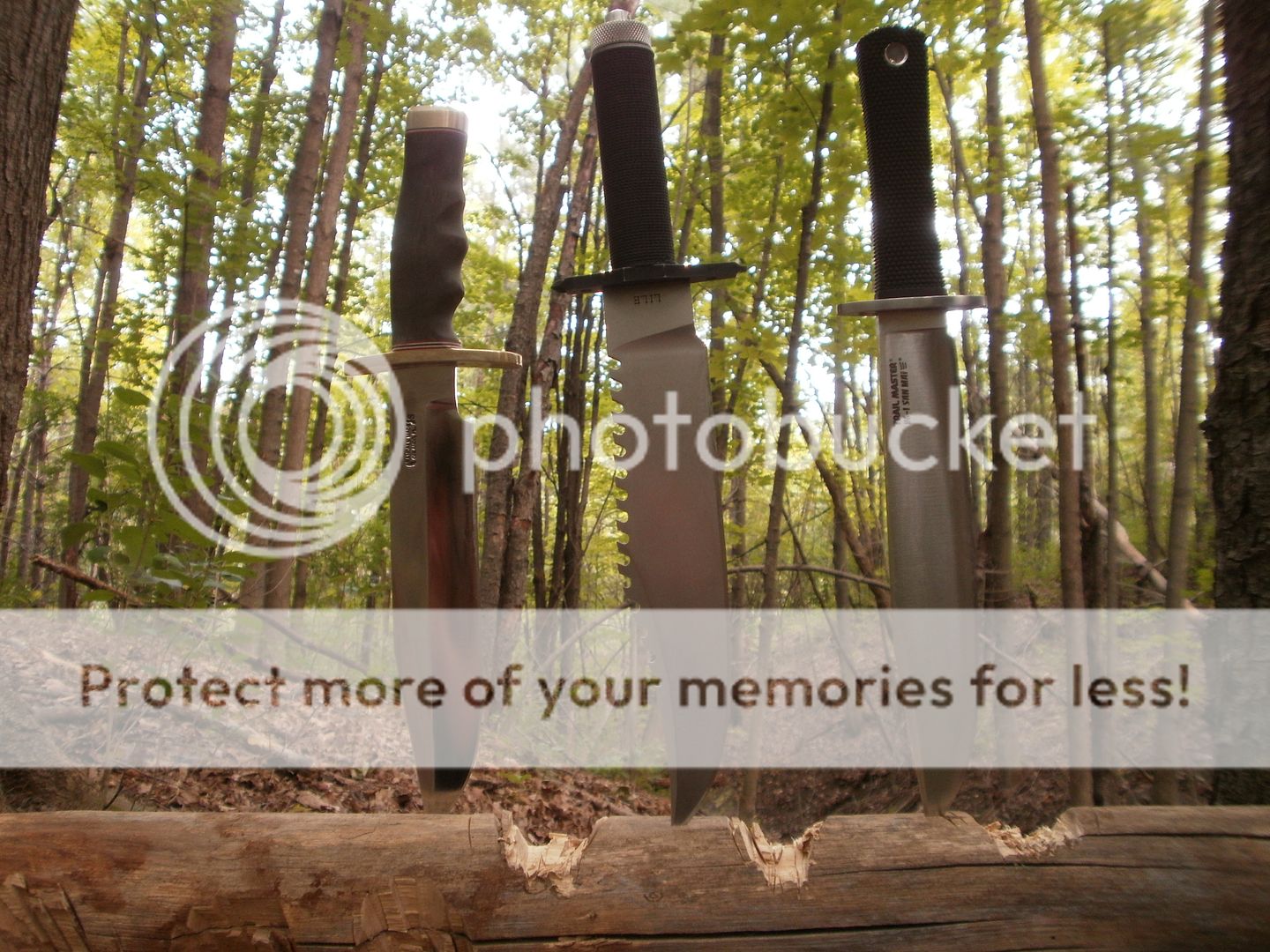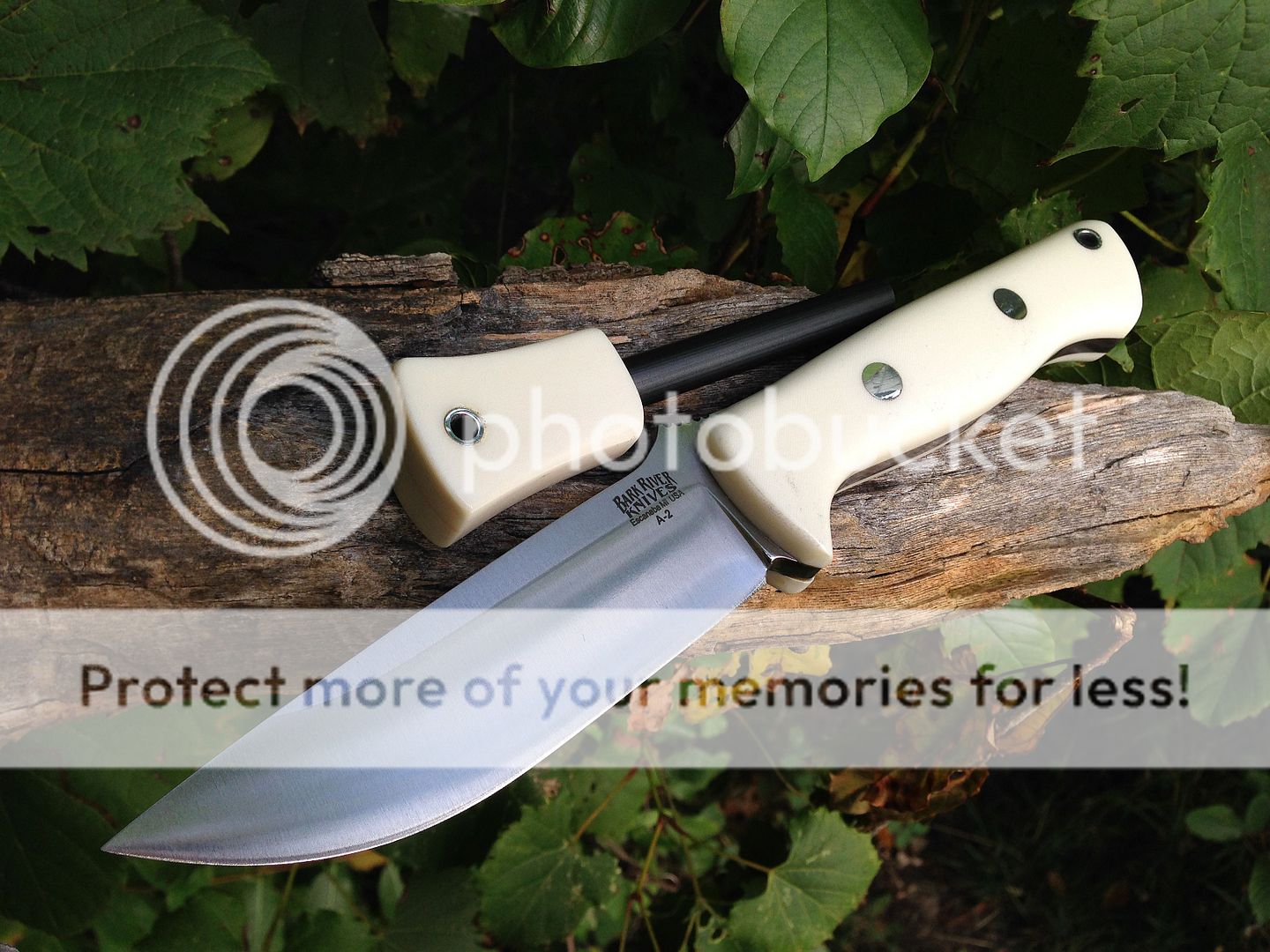Any "Survival Knife" should be expected to be able to build a shelter... All my knives have at least one thermal blanket, often wrapped around the sheath or attached to it, and over 20 feet of rope...
The simple act of building a shelter is hugely draining to a knife, I would even say it is damaging, not just wearing... And by the time you are done building a real shelter, depending on the wood you encounter, you are cutting wood with a butter knife (which is why it is best to start with the sharpest thinnest edge possible, on the biggest possible knife)...
Re-sharpening in the field will
not allow you to do a heavy edge re-profile, so that will only provide a moderate amount of help along the way in slowing down the edge decay: A thin edge will last a lot longer than a thick edge, because all the re-sharpening in the field will do is gradually open the angle... Start out with as closed an angle as you can...: I consider 15 degrees per side borderline excessive... And that often means avoiding thick convex edges like on a San Mai III Trailmaster... A thick edge, even one that shaves hair, is exactly the opposite of what you want for rough work...
A longer edge will also last longer, just because there is
more of it... Putting the title "Survival" on those tiny bushcraft blades is a patently ridiculous fad because of this edge durability issue alone... Why not deliberately start out with soft untreated steel while you are at it?
Chopping power below 9" very quickly goes down: 10" blades are a jump in performance even over 9". I would say a good Survival Knife should have a 10" blade minimum. Avoid full tangs that transmit vibrations to the hand: I prefer stick tangs or hollow handles.
Edge wear is why main edge serrations can actually help (if the knife's edge is typical factory work and not very thin), because serrated edges will retain some cutting ability, without sharpening, and do this for many multiples of the hard use plain edges will widthstand... This is why having a thin profile serrated edge on the spine, which relatively few knives ever do -a rare exception being the AL Mar SF-10- makes a lot of sense, and may make more sense than having a low-performance wood saw there...
This is one reliable expert's view (agreeing with at least a few others) on what is required for true survival:
http://www.m4040.com/Survival/Survival.htm
Bush Blades... Function or Fad?
- By M40 Sept, 2007
Quote, (note the points in bold): "I know the term "bush knife" has come to signify a blade about 4-6" in length and about an inch to 2" wide. Many have stag or hardwood handles, and some even sport really beautiful craftsmanship. I'm not sure just how and why these came into fashion or how folks came to think that these had any place in an outdoors environment. The design falls FAR short of what an outdoors blade should be. I've seen pocket knives that sport bigger and more functional blades.
These are skinners maybe, but definitely not choppers (the primary task of an outdoors blade). Oddly enough, there's very little whittling to be done in most wilderness survival situations. If the size and weight of these "bush" knives appeals to you, you really should consider packing a decent folder or a multi-tool instead. A multi-tool has a lot more to offer in the way of tools you can actually use.
A true bush blade (as I would make it) is a chopping machine. It's a large bowie or kukri style blade with a weight-forward balance that makes short work of brush and limbs. It's a one-tool carpentry shop that can whip up a shelter on short notice when the weather rolls in.
To sum up, I'd rather see someone tackle the outdoors with a $15 Ontario mil-spec machete than any of those really expensive and pretty "bush" blades."
Unless that is, you want to spend a huge amount of effort using a tiny blade that will dull in the blink of an eye because it is so small and overworked...
Gaston








